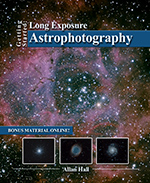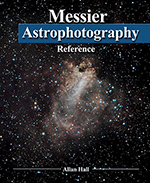

I have always been fascinated by the many mysteries of the universe, that is one of the driving reasons I became an amateur astronomer. One of the most intriguing phenomena that I have encountered is the Wolf-Rayet star. These stars are some of the most massive and luminous objects in the universe, yet they are also some of the most enigmatic. In this article, I will attempt to pass on a little of the mystery and grandeur that fascinates me so much.
Introduction to Wolf-Rayet Stars
Wolf-Rayet stars are a type of massive stars that are named after their discoverers, French astronomers Charles Wolf and Georges Rayet. These stars have exhausted their lighter elements and are characterized by their strong stellar winds and high luminosity. They are also known for their high temperatures and relatively short lifetimes. Wolf-Rayet stars are believed to be in a transitional phase between the main sequence and supernova stages of stellar evolution.
The first Wolf-Rayet star was discovered in 1867, but it was not until the early 20th century that astronomers began to understand their significance. Today, we know that Wolf-Rayet stars are some of the most important objects in the universe, playing a key role in the evolution of galaxies and the formation of new stars.
Discovery and Classification of Wolf-Rayet Stars
Wolf and Rayet observed certain stars with broad emission lines that were not present in other stars. These emission lines were believed to be due to strong stellar winds.
Since then, astronomers have classified Wolf-Rayet stars into three main types based on their spectra: WN, WC, and WO. The WN type is characterized by nitrogen-rich emission lines, while WC stars are carbon-rich and WO stars are oxygen-rich.
Nitrogen-rich Wolf Rayet stars are the most common. Carbon-rich and Oxygen-rich Wolf Rayet stars are relatively rare.
In addition to the spectral classification of Wolf-Rayet stars, astronomers also classify them according to their luminosity. There are two main categories: supergiant WR stars and dwarf WR stars. Supergiant WR stars are some of the most luminous objects in the universe, while dwarf WR stars are relatively faint and short-lived.
The Evolution of Wolf-Rayet Stars
These stars have a relatively short life compared to other types of massive stars. They are believed to be in a transitional phase between the main sequence and supernova stages of stellar evolution. As Wolf-Rayet stars age, they lose mass through their strong stellar winds. This mass loss can cause the star to evolve into a red supergiant or a luminous blue variable star. Eventually, the star will run out of fuel and undergo a supernova explosion.
The exact evolutionary path of a Wolf Rayet star depends on its initial mass and composition. Higher mass stars are more likely to evolve into Wolf Rayet stars, and nitrogen-rich Wolf Rayet stars are more likely to evolve into red supergiants, while carbon-rich Wolf Rayet stars are more likely to evolve into luminous blue variables.
Characteristics of Wolf-Rayet Stars – Mass, Temperature, Luminosity
Wolf-Rayet stars are some of the most massive and luminous objects in the universe. They are typically more than 20 times as massive as the sun, and they can be up to 100,000 times as luminous. Wolf Rayet stars are also known for their high temperatures, which can reach up to 200,000 Kelvin.
One of the most interesting characteristics is their strong stellar winds. These winds can be up to 10,000 times as strong as the solar wind, and they play a key role in the evolution of the star. The stellar winds of Wolf-Rayet stars can also create complex structures in the surrounding interstellar medium.
Types of Wolf-Rayet Stars – Nitrogen-Rich, Carbon-Rich, and Oxygen-Rich
As mentioned earlier, there are three main types of Wolf Rayet stars: nitrogen-rich, carbon-rich, and oxygen-rich. Nitrogen-rich Wolf Rayet stars are the most common, and they are believed to be in a transitional phase between the main sequence and red supergiant stages of stellar evolution. Carbon-rich Wolf Rayet stars are relatively rare, and they are believed to be in a transitional phase between the main sequence and luminous blue variable stages of stellar evolution. Oxygen-rich Wolf Rayet stars are also rare, and they are believed to be in a transitional phase between the main sequence and Wolf Rayet stages of stellar evolution.
Importance of Wolf-Rayet Stars in the Universe
Wolf-Rayet stars are some of the most important objects in the universe as they play a key role in the evolution of galaxies and the formation of new stars. Wolf-Rayet stars are believed to be the progenitors of many types of supernovae, including Type Ib and Type Ic supernovae.
The strong stellar winds of Wolf Rayet stars can also create complex structures in the surrounding interstellar medium. These structures can include nebulae, bubbles, and shells. These structures can help astronomers to understand the processes of star formation and galactic evolution.
Observing and Studying Wolf-Rayet Stars
Studying Wolf-Rayet stars can be challenging, due to their high temperatures, strong stellar winds, and relatively short lifetimes. However, recent advances in telescopes and instrumentation have made it possible to observe and study these objects in detail.
One of the most important tools for studying Wolf-Rayet stars is spectroscopy which allows astronomers to analyze the elemental composition of a star, as well as its temperature and luminosity. Spectroscopy can also be used to study the complex structures in the surrounding interstellar medium.
The Top Five Visible Examples of Wolf-Rayet Stars
Gamma Velorum
Gamma Velorum is a binary star system located in the constellation Vela. The primary star is a Wolf-Rayet star, while the secondary star is an O-type main-sequence star. The Wolf-Rayet star is losing mass at a very high rate, and its stellar wind is colliding with the wind from the O-type star, producing X-rays.
WR 134
WR 134 is a Wolf-Rayet star located in the constellation Cygnus. It is one of the brightest Wolf-Rayet stars in the sky, with an apparent magnitude of 6.19. WR 134 has a very strong emission in the blue and ultraviolet regions of the spectrum, and its spectrum shows broad absorption lines that are shifted to the red end of the spectrum.
WR 136
WR 136 is a Wolf-Rayet star located in the constellation Cygnus. It is a member of the Cygnus OB2 association, which is one of the most massive associations of young stars in the Milky Way galaxy. WR 136 has a mass of about 25 solar masses and is losing mass at a rate of about 10^-5 solar masses per year.
WR 137
WR 137 is a Wolf-Rayet star located in the constellation Aquila. It is a member of the Aquila OB1 association, which is a group of young stars that are about 500 parsecs from Earth. WR 137 has a mass of about 23 solar masses and is losing mass at a rate of about 10^-5 solar masses per year.
WR 140
WR 140 is a binary star system located in the constellation Cygnus. The primary star is a Wolf-Rayet star, while the secondary star is an O-type main-sequence star. The two stars are very close together and orbit each other with a period of about 7.9 years. The Wolf-Rayet star is losing mass at a very high rate, and its stellar wind is colliding with the wind from the O-type star, producing X-rays and radio emissions.
Challenges in Studying Wolf Rayet Stars
Studying Wolf Rayet stars presents many challenges for astronomers. One of the biggest challenges is their relatively short lifetimes. Wolf Rayet stars typically live for only a few hundred thousand years, which is a relatively short time in astronomical terms.
Another challenge is the strong stellar winds of Wolf-Rayet stars. These winds can create complex structures in the surrounding interstellar medium, which can make it difficult to study the star itself by obscuring it from direct observation.
Finally, the high temperatures of Wolf-Rayet stars can also be a challenge for astronomers. These stars are so hot that they emit most of their radiation in the ultraviolet and X-ray regions of the spectrum, which can be difficult to observe from Earth.
Future Research on Wolf-Rayet Stars
Despite the challenges, there is still much to be learned about Wolf-Rayet stars. Future research will focus on understanding the complex processes that drive the evolution of these stars, as well as the role that they play in the formation of new stars and galaxies.
New telescopes and instrumentation will also play a key role in advancing our understanding of Wolf-Rayet stars. The James Webb Space Telescope, for example, can observe these objects in greater detail than ever before.
Conclusion
Wolf-Rayet stars are some of the most fascinating objects in the universe. They are massive, luminous, and enigmatic. They play a key role in the evolution of galaxies and the formation of new stars. Studying these objects presents many challenges, but advances in technology are making it possible to observe and study them in greater detail than ever before. As we continue to explore the mysteries of the universe, Wolf-Rayet stars will undoubtedly continue to play a key role in our understanding of the cosmos. Not to mention, trying to observe them is just plain fun!
Share this post!








